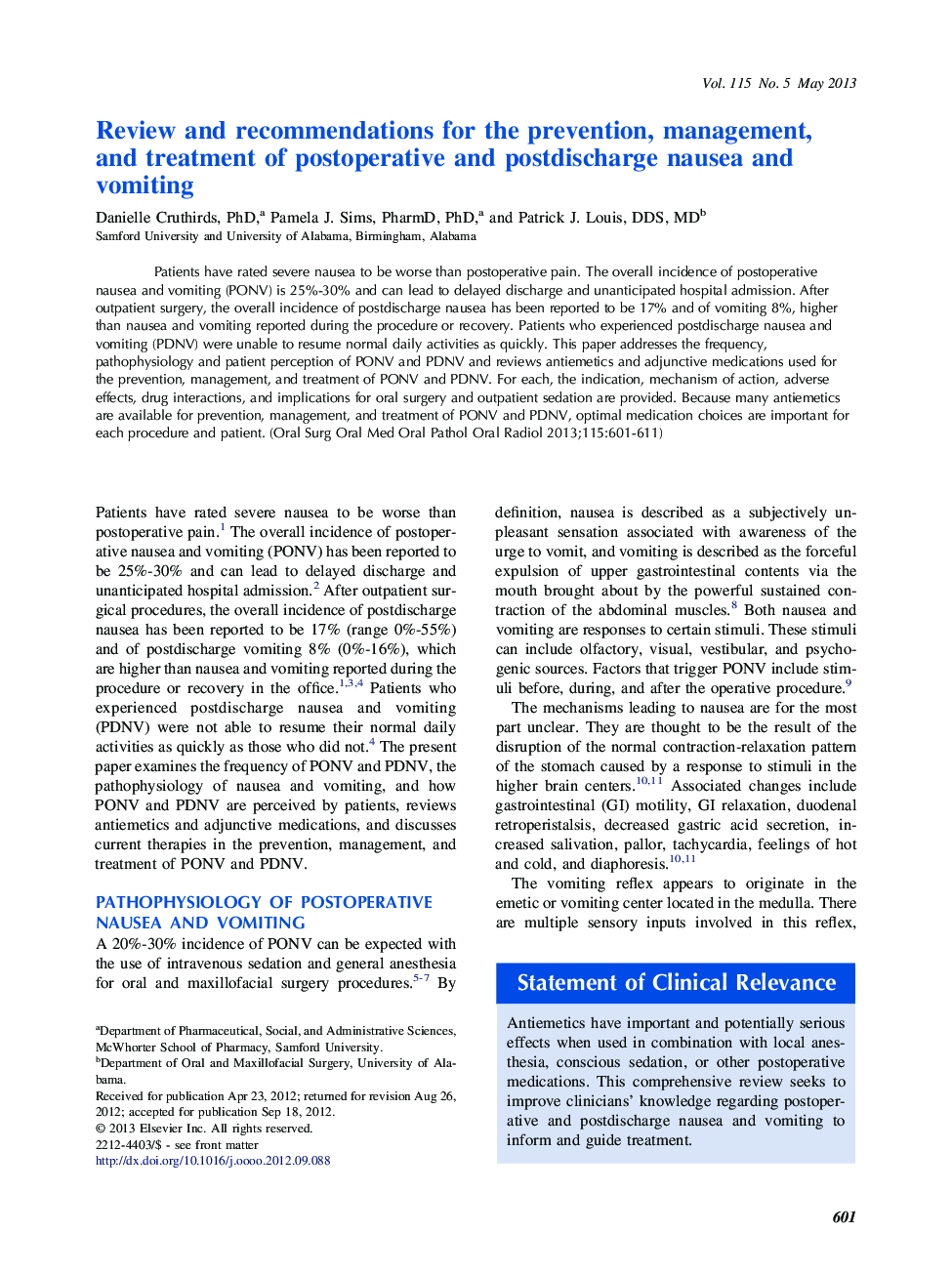| Article ID | Journal | Published Year | Pages | File Type |
|---|---|---|---|---|
| 6057775 | Oral Surgery, Oral Medicine, Oral Pathology and Oral Radiology | 2013 | 11 Pages |
Abstract
Patients have rated severe nausea to be worse than postoperative pain. The overall incidence of postoperative nausea and vomiting (PONV) is 25%-30% and can lead to delayed discharge and unanticipated hospital admission. After outpatient surgery, the overall incidence of postdischarge nausea has been reported to be 17% and of vomiting 8%, higher than nausea and vomiting reported during the procedure or recovery. Patients who experienced postdischarge nausea and vomiting (PDNV) were unable to resume normal daily activities as quickly. This paper addresses the frequency, pathophysiology and patient perception of PONV and PDNV and reviews antiemetics and adjunctive medications used for the prevention, management, and treatment of PONV and PDNV. For each, the indication, mechanism of action, adverse effects, drug interactions, and implications for oral surgery and outpatient sedation are provided. Because many antiemetics are available for prevention, management, and treatment of PONV and PDNV, optimal medication choices are important for each procedure and patient.
Related Topics
Health Sciences
Medicine and Dentistry
Dentistry, Oral Surgery and Medicine
Authors
Danielle PhD, Pamela J. PharmD, PhD, Patrick J. DDS, MD,
